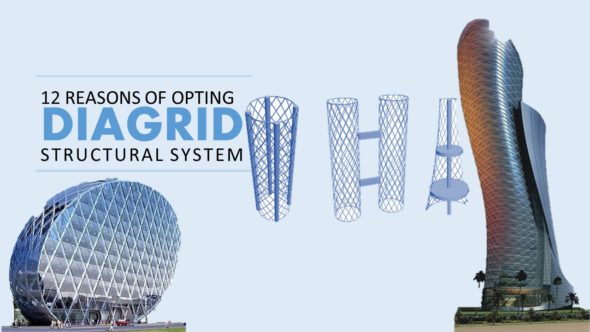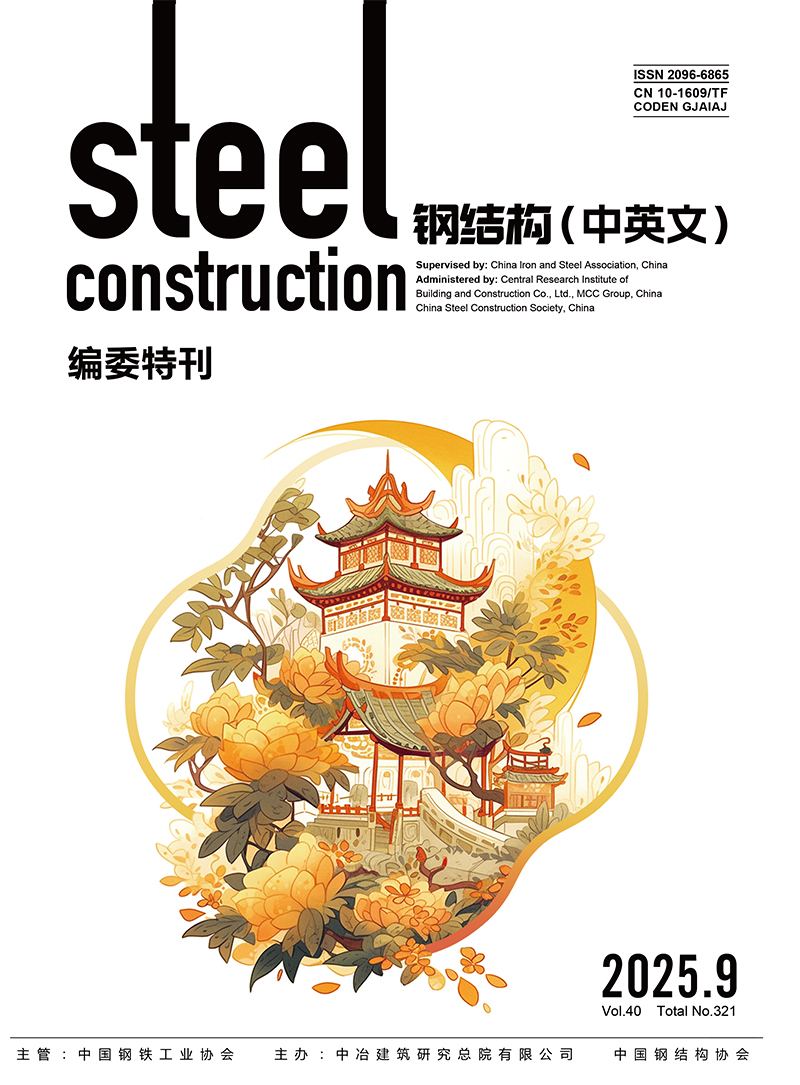
Getting a column-free interior has always been a try of structural engineers and architects for optimal usage of the internal space. Thanks to the advantages of diagrid Structural system that has made it possible now.
What is diagrid structural system?
The wordy mean of diagrid; dia means many and grids regard those intersecting triangular members / beams that are repeated and act as replacement for vertical columns and longitudinal beams. Diagrid is a pioneering structural systems because of these structural and architectural inherited properties discussed above.
Advantages derived from Diagrid Structural System
1,Safer and Taller Structures
It is no wonder that mankind has witnessed outstanding and incredible inventions headed by contention for super-tall buildings. Thanks to the ingenuity of Structural engineers that these developments and advances has led us to much safer and taller structures that we were only able to idealize in the past.
2.Go for Super-tall Structures
On more reason for opting super-tall structures is the intense pressure on the available land. In urban areas of developed countries, you can’t expect to purchase a land for your one story house. Lolz.
Previously the structural engineers were using systems like that of waffle slab, dome construction etc to achieve more of a column free span. But nothing is more outstanding than the diagrid construction.
3.No periphery Columns
The diagrid structural system has recently been evolved in parallel to the typical moment frame or brace frame structure. In this type of structural system, the periphery columns are replaced with a system of triangulated diagonal beams and horizontal rings.
4.Freedom of Architectural Complex Geometries
These diagonal beams can be in a straight orientation or in a curved one depending on the architectural requirement. According to peers of structures, the diagrid triangular component combines the effect of resisting axial loads as well as lateral loads. From appearance they depict a truss like structure and thus the shear and over-turning moments are said to be resisted by axial action rather than bending action of vertical columns in a traditional framed tube structure.
5.Resistant to lateral loadings efficiently
Because of the diagonal members the lateral loading aka wind and earthquake loading are efficiently resisted allowing the freedom to engineer’s during the design of core columns to design them against gravity loads only. In conventional buildings the designer has to go for shear wall system, tubular system or outrigger system to design against lateral loadings.
6.Efficient use of structural strength
The evolution from limit state design to plastic state design has certainly allowed us to better understand the behavior of structural systems in critical loading. With that in hand, we are now able to fully utilize the structural strength of the construction elements thereby minimizing the cost and avoiding overdesign which was frequent in the past.
7.Enhanced Stiffness and Strength
From the knowledge about trusses we are well familiar with the diagonal-ized applications of structural steel members and their enhanced stiffness and strength. In cases of complex geometries and curved architectures the use of diagrid system is manifold.
You might have seen the John Hancock Center, Chicago featuring braced tube elements on the façade meant for resisting the lateral loading. This system of structure is actually called braced tube structural system.
8.Unobstructed external view from facade
There is no denying that this diagrid system has evolved from the brace tube structural system replacing the vertical columns as a whole by intersecting triangulated braced elements.
In brace tube structural system, the bracing elements are there just to resist lateral loading and for gravity loads the columns have to be there on the façade but in the later system both the purposes are served by the repetitive diagrids.
The bracing element of braced frame structure, however, can be problematic as they can interfere with the design of the façade and the positioning of openings. So it is a better idea to harmonize the façade with that of bracing elements which is only possible in case of diagrid system.
Because of this unobstructed view, the diagrid system is an ideal option for an energy efficient building system allowing the maximum usage of day lightning.
9.No Need of Shear Resisting Elements
As the loads of the buildings are resisted by axial actions so there is no need for constructing rigid shear cores in case of high shear stresses. No shear walls or rigid walls are required on the façade or in the core.
10.Flexibility of Floor Plan
Because of column free interior space, it gives the architect a free hand in adjusting the floor plans based on needs and demands of the buildings.
11.Less amount of Material Required
The Diagrid structural system saves approximately 20 percent of structural steel weight when compared to a conventional moment-frame structure.
12.Rigidity and Monolithic behavior
The diagrids of the building have the ability to redistribute the load efficiently across members in case of partial failure of a region in the building. Because of this behavior the skyscraper structural failure is avoided altogether which was a major concern in the past to the designers.
Conclusion
Despite of many advantages of diagrid structural system, still there is more need to explore new tricks and configurations in the structure. The engineering and fabrication of the joints is a complex subject that has to be explored in depth.
The labor, in case of diagrid structural system has to be well conversant with the erection and fixing of members and elements. The language of windows has to be uniform throughout the building; this is a difficult task in case of diagrid structural system.




 Login
Login Register
Register

 Steel Construction Published the List of Highly Influential Articles of 2020
Steel Construction Published the List of Highly Influential Articles of 2020





